Key takeaways
- Culturally responsive teaching recognizes and honors students’ cultural backgrounds, turning education into a dynamic, inclusive dialogue.
- Incorporating students’ cultural experiences into lessons enhances engagement and helps them see themselves as agents of change.
- Key practices include creating space for multiple perspectives, reflecting on personal biases, and adapting resources to connect with students’ realities.
- Building genuine relationships and fostering trust are essential for encouraging student participation and enriching the learning experience.
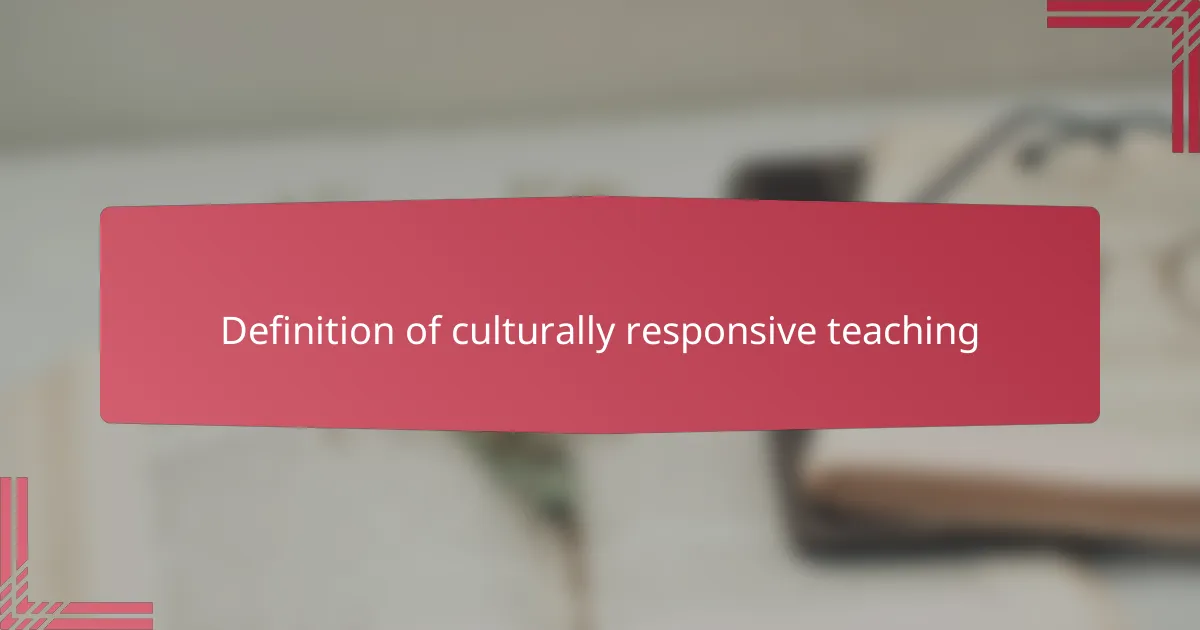
Definition of culturally responsive teaching
Culturally responsive teaching, in my experience, means recognizing and honoring the cultural backgrounds of all students as a vital part of their learning journey. It’s not just a strategy but a mindset that asks, “How can I make my classroom reflect and respect who my students truly are?”
I remember a moment early in my career when I realized ignoring cultural differences was limiting my students’ potential. It hit me: teaching isn’t one-size-fits-all. Culturally responsive teaching invites me to actively connect curricula, teaching styles, and classroom interactions to the diverse realities my students live in.
Isn’t that what education should be about—building bridges rather than walls? To me, culturally responsive teaching challenges traditional methods and embraces students’ identities as strengths, turning teaching into a dynamic, inclusive dialogue rather than a monologue.
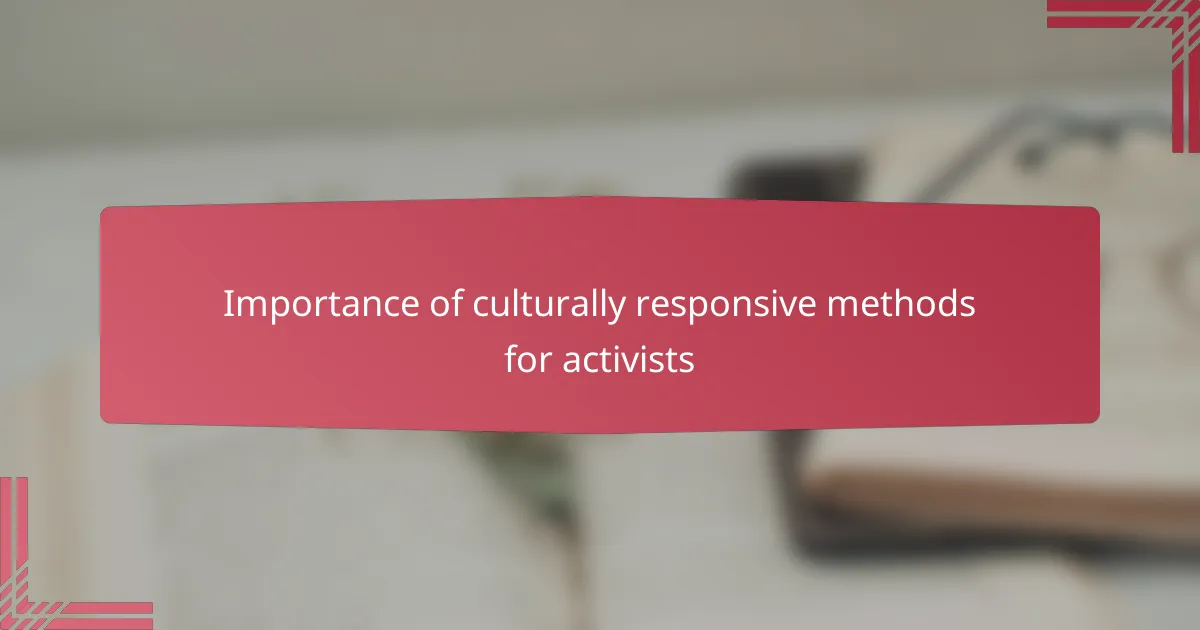
Importance of culturally responsive methods for activists
As an activist teacher, I’ve found that culturally responsive methods are essential because they empower students to see themselves as valuable contributors to social change. When students recognize their own culture reflected in the lessons, their engagement deepens, and their voices grow stronger. Isn’t it powerful to witness a classroom where every student feels seen and heard?
I recall a time when I incorporated stories from my students’ communities into our discussions about justice and equity—it transformed the energy in the room. Suddenly, the abstract ideas of activism became real, urgent, and personal. That’s when I truly understood why culturally responsive teaching isn’t just a pedagogical choice but a form of activism itself.
For activists like me, these methods don’t only elevate students—they challenge the systemic biases embedded in education. By validating diverse cultural perspectives, we actively resist a one-dimensional narrative and create spaces where all students can thrive as agents of change. Isn’t that exactly what we want from education?
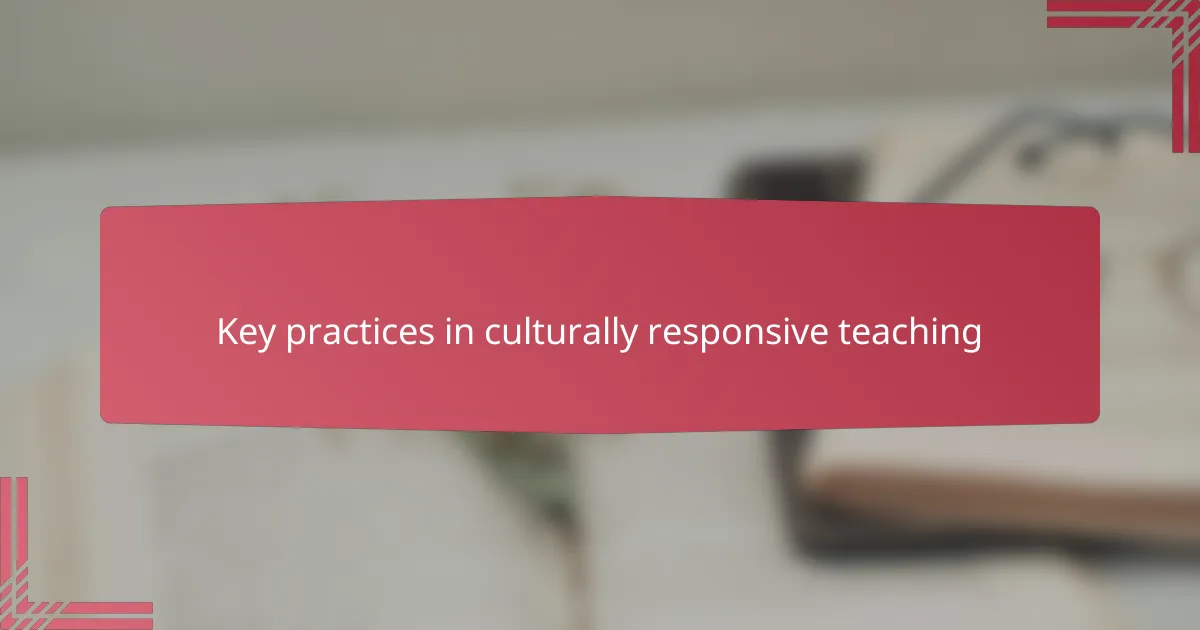
Key practices in culturally responsive teaching
One practice that has deeply influenced my teaching is weaving students’ cultural experiences directly into the fabric of lessons. I remember when a student shared a traditional story from their heritage, and suddenly, the whole class leaned in, genuinely curious. That moment reminded me how powerful it is to validate students’ identities as sources of knowledge rather than just subjects to be taught.
Another key practice I rely on is creating space for multiple perspectives to coexist in classroom discussions. It’s never about just one “right” way to think or learn. When I emphasize this, I see students become more open, critical, and empathetic—qualities that I know are essential not just in school but in life.
I also make it a point to reflect regularly on my own biases. It’s uncomfortable but necessary. How else can I truly meet my students where they are if I don’t acknowledge how my perspective shapes what and how I teach? This ongoing self-awareness keeps the teaching dynamic and rooted in respect rather than assumptions.
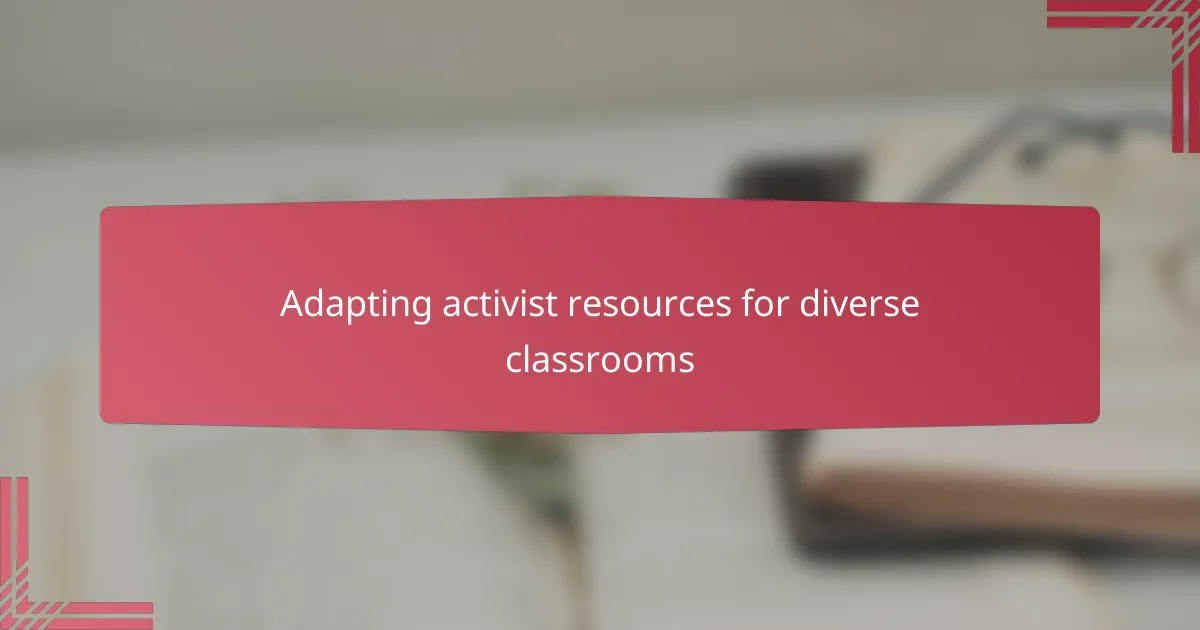
Adapting activist resources for diverse classrooms
Adapting activist resources for diverse classrooms means more than simply translating content—it’s about reshaping materials so every student sees their own story in the lesson. I recall using an activist video that initially felt too narrow; by inviting students to draw parallels to their own cultures, the discussion became vivid and deeply personal. Doesn’t it make a difference when students realize activism isn’t someone else’s fight, but theirs as well?
Sometimes, adapting resources requires creative flexibility. For example, when I introduced a local social justice issue, I encouraged students to connect it with their community experiences, which sparked passionate debates and genuine engagement. How often do we underestimate students’ ability to link big ideas with their unique realities?
I’ve found that the key to adapting materials lies in listening—really listening—to what students bring into the classroom. Their feedback often uncovers cultural nuances I hadn’t considered, shaping resources that resonate authentically. Isn’t it powerful when teaching becomes a collaborative act of learning and activism?
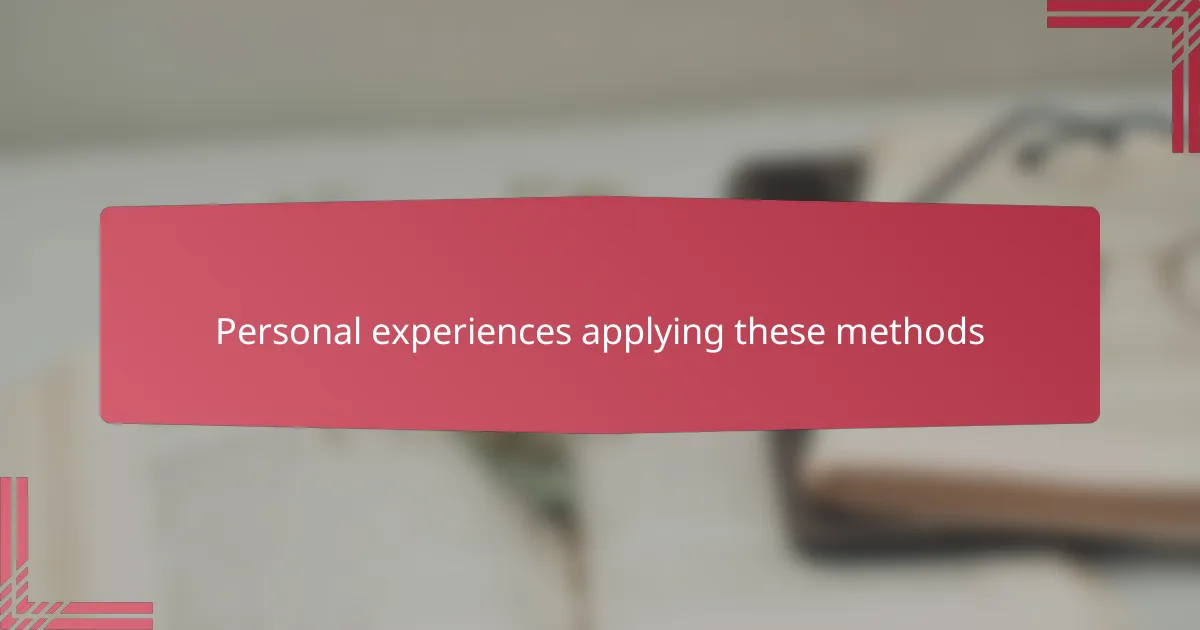
Personal experiences applying these methods
When I first applied culturally responsive methods, I was nervous about stepping outside my usual lesson plans. But then I saw a student light up when I asked them to share a family tradition connected to the topic we were studying. That moment made me realize how much richer the classroom became when I made space for their voices.
There was one time during a unit on history when I invited students to bring stories from their own communities. The discussions grew so alive that the textbook almost felt secondary. Have you ever noticed how students engage differently when they see their culture as part of the curriculum? I certainly have, and it changed how I approach teaching forever.
At times, adapting these methods challenged me deeply—particularly when I had to confront my unconscious biases. It wasn’t always comfortable, but reflecting on my assumptions helped me meet students more authentically. How can we expect to teach inclusively if we don’t first understand ourselves? For me, this ongoing process has been as transformative as the lessons themselves.
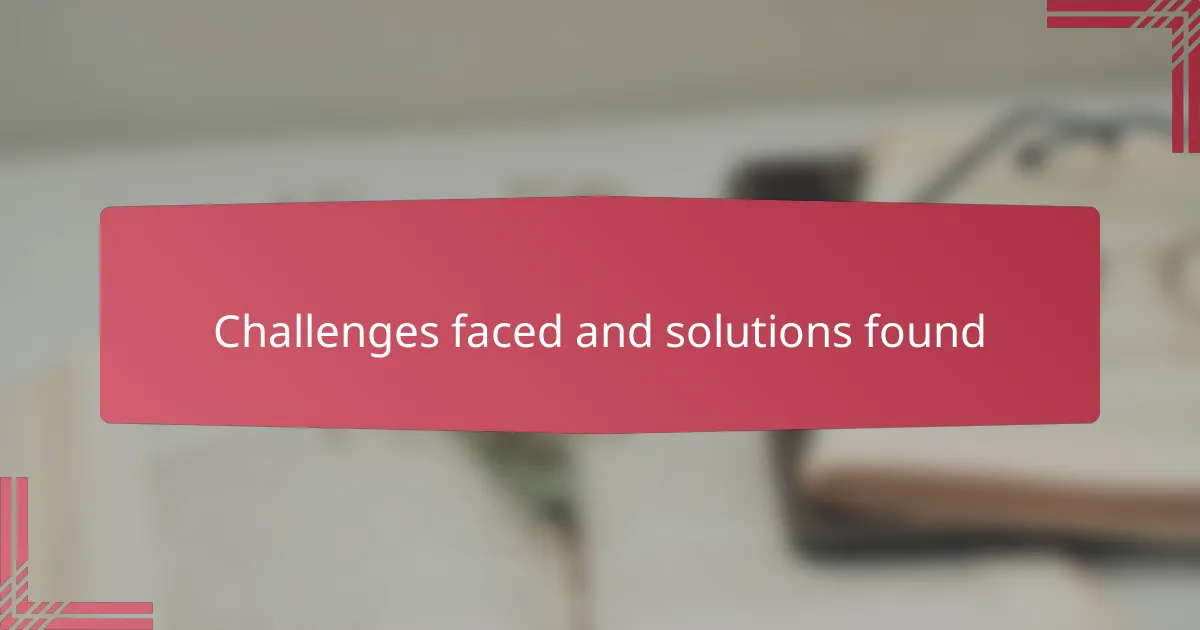
Challenges faced and solutions found
One challenge I faced early on was balancing the curriculum requirements with culturally responsive content. There were moments when I felt pressured to “cover the material” but knew that wouldn’t honor my students’ identities. So, I shifted my approach: instead of adding content as an extra task, I wove their stories directly into our core lessons. Hasn’t that made learning more meaningful? For me, it transformed a rigid checklist into a vibrant dialogue.
Another hurdle was confronting my own blind spots. I remember a time I unintentionally overlooked a cultural reference one student made, and it left them frustrated. That moment hit me hard—I realized that being culturally responsive isn’t just about students; it’s also about continuous self-reflection. So, I started keeping a journal to note what I learned from students and where I stumbled. This habit became a practical tool to grow alongside them.
It was also challenging to engage students who initially seemed hesitant to share their cultural experiences. At first, I wondered if pushing too hard might backfire. But then I tried small, low-pressure activities—like inviting anonymous notes or pairing students to share stories privately. These small shifts built trust and eventually led to richer conversations. Isn’t patience often the key to genuine connection in teaching? I found it definitely was.
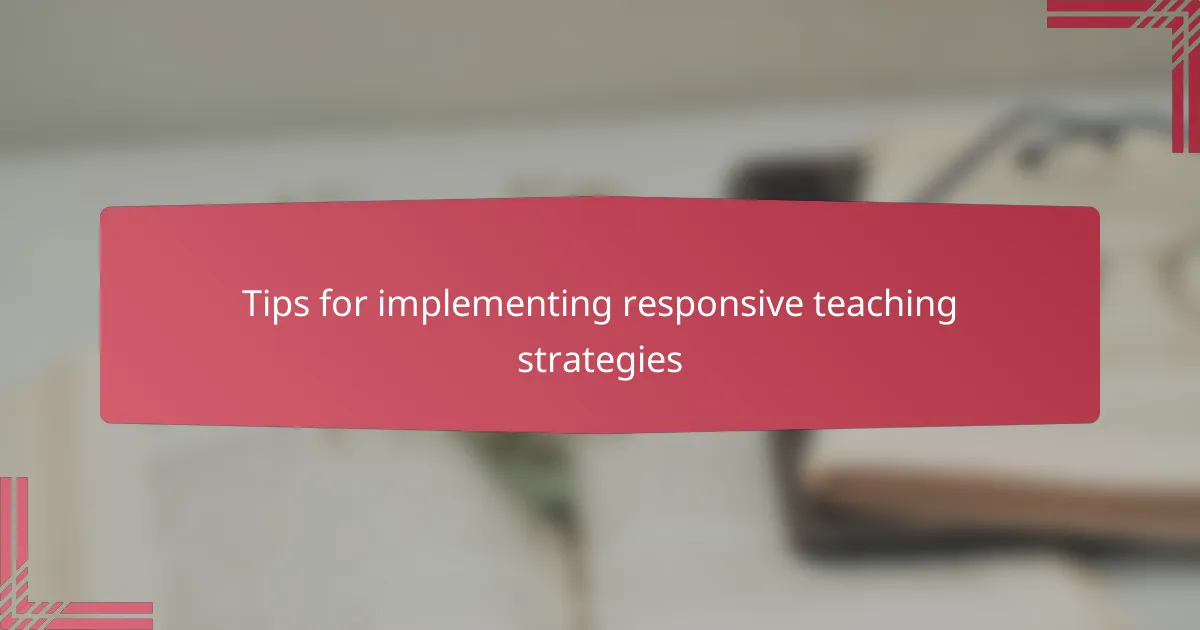
Tips for implementing responsive teaching strategies
One thing I’ve learned is to start small when implementing responsive teaching strategies. Trying to overhaul everything at once can feel overwhelming, but even integrating a single cultural example related to the lesson can open doors. Have you ever noticed how a simple story or reference from a student’s background can shift the entire classroom vibe? It often sparks curiosity and respect in ways a textbook can’t.
I also found that building genuine relationships is key. When you truly listen and show interest in students’ cultures, they’re more willing to participate and share. Early in my experience, I asked a student about a holiday they celebrated, and that moment of connection turned into a springboard for deeper discussions. Isn’t it amazing how trust can transform learning from a task into a shared journey?
Finally, flexibility is crucial. Plans will change, and you’ll need to adapt on the fly as you learn more about your students’ needs and perspectives. I’ve had lessons morph completely because a student’s insight shifted the direction—and that’s a good thing. How often do we let rigid lesson plans limit the rich possibilities that emerge when we honor students’ voices? For me, embracing this fluidity has been both freeing and enriching.